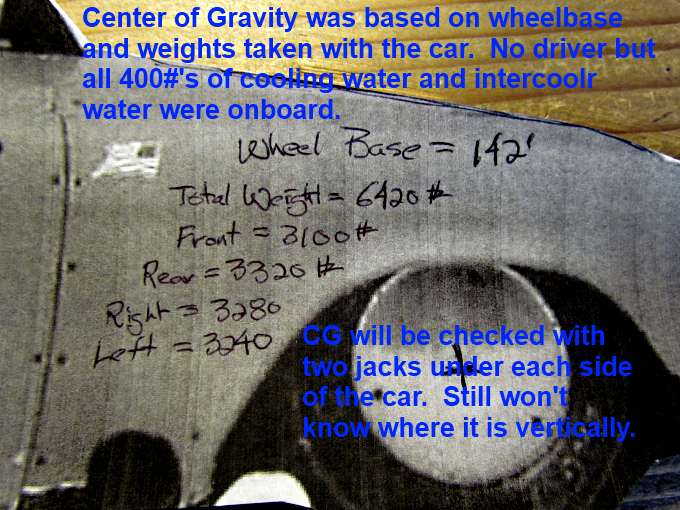.... Sum...how is traction with the CG so forward? Seems like it would suck. Whats Hooleys best 2/14 and 1st mile time?..
We don't have a good run with the new motor as I was doing license runs and we felt the motor might of gotten hurt so quit after the last run where I got my A license. On the one B lic. run where I got into probably 75% throttle and then 100% for a second until the throttle stuck the car was running 185 at the 1 1/2 mile marker before it started to spin and I'm sure it would of in the old configuration (pre-vertical stablizers/wing) but didn't.
With the old B motor that maybe made a little over 800 HP Hooley would run about a 217 at the 2 1/4 and set the record at 249+ with a 253 exit speed. With a 2.47 rear and a 1.91 first he could run about 50% throttle max in 1st gear (this is data logged data not driver impressions). Would get to 100% throttle in the 1 to 1 3rd and in the overdrive 4th (.93).
It isn't just about the CG as you can have all different rear axle weights with the same CG. In our case right now the car with the big block and the 2 foot extended wheel base is at 6420 lbs. minus a driver and has 3320 on the rear....

... other figures are in the pic above.
Now with the wing we will be able to add downforce without having to add weight hopefully (won't help a lot at lower speeds but at some point you will meet the aero wall where the car is going to spin the tires on the top end too and then we will have the benefit of the wing). Even with the wing working we will still have the CG ahead of the CP as shown above since the wing hasn't moved the CG.
I think the car has a lot of potential. On my A lic. run I didn't push it at all getting up to speed and ran the last couple miles constant throttle between 212 and 218 with the throttle in the mid 40% range. We had changed gearing in the transmission and thought we had different drive gears than we really had and went less overdrive instead of more. According to the tack I thought I was running 240 but that was based on having the ratio in the transmission we thought we had. Since the timing slip and my calcs didn't agree back home I counted teeth in the transmission and then saw we had different drive gears than what we thought. Plugging those in the calcs and timing slip now matched. We were going back to World Finals with the right gears in the transmission but it rained out and then the same happened this year so we have yet to find out what the new combo is going to do but I think it will run well over 217 at the 2 1/4

,
Not sure what the comment about tongue weight was about but if it was about that pump trailer I built it had well over 10% tongue weight (about 400 lbs. if I remember right). The problem it had was the weight at the two ends of the trailer which still put the CG close to the axles or ahead but the weight, especially at the far back was not in a good place once inertia became a factor.
Sumner